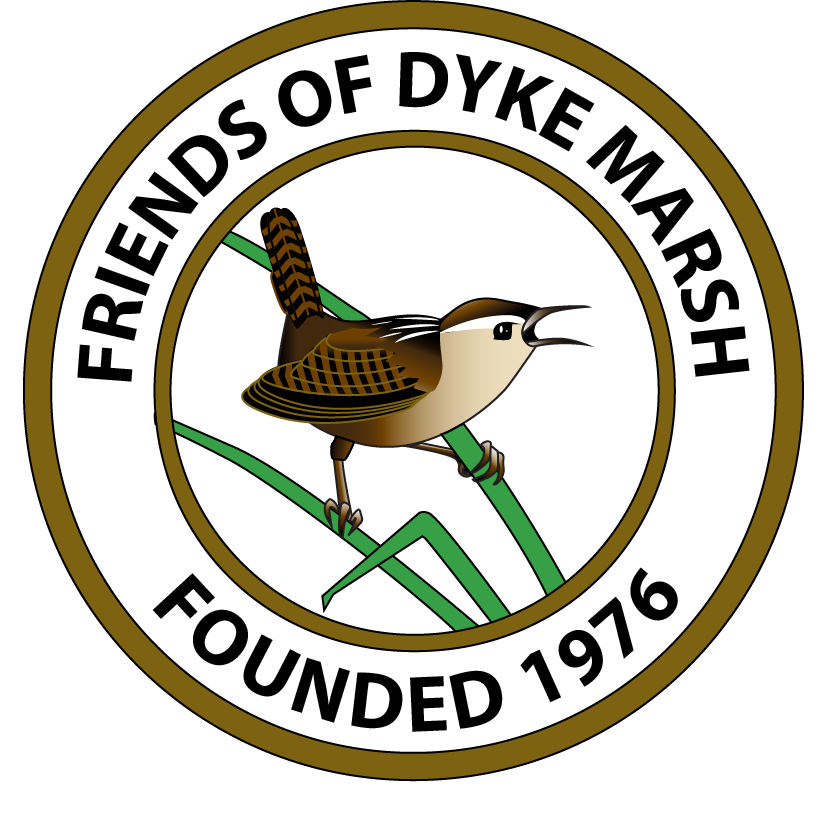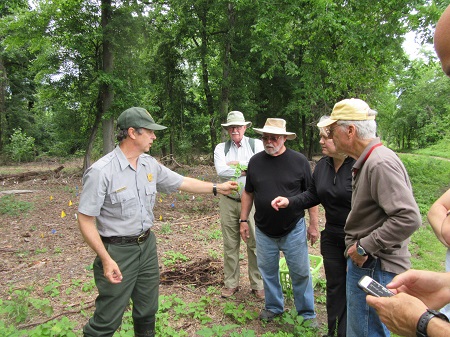Keeping non-native, invasive plants out of the native plant restoration area along the Haul Road trail is a long-term challenge and efforts began on June 5, 2018, when ten volunteers participated in a training led by National Park Service (NPS) biologist Brent Steury. Brent stressed that the two priority plants to try to control are Japanese stiltgrass (Microstegium vimineum) and mile-a-minute (Polygonum perfoliatum). He urged volunteers to pull them out of the ground before they set seed. “If they set seed, we’ve lost,” he stressed.
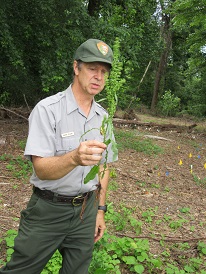 Brent Steury discusses an invasive plant, curled or narrow dock (Rumex crispus).On the good news front, since NPS cleared the .065 acre for planting natives, several “volunteer” native plants have emerged from the seedbank, like the yellow passion flower (Passiflora lutea L.), leafcup (Polymnia L.) and native violets. By June 10, volunteers will have put in almost 3,000 plants and trees.
Brent Steury discusses an invasive plant, curled or narrow dock (Rumex crispus).On the good news front, since NPS cleared the .065 acre for planting natives, several “volunteer” native plants have emerged from the seedbank, like the yellow passion flower (Passiflora lutea L.), leafcup (Polymnia L.) and native violets. By June 10, volunteers will have put in almost 3,000 plants and trees.
The native plant restoration project is a partnership of FODM, the National Park Service, Earth Sangha and the Audubon Society of Northern Virginia. FODM appreciates these partnerships and support from the National Environmental Education Foundation and Transurban.
Photos contributed by Glenda Booth.
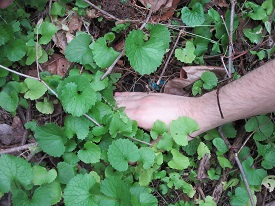 Garlic mustard (Alliaria petiolate) is a pervasive invasive plant targeted for removal. Garlic mustard (Alliaria petiolate) is a pervasive invasive plant targeted for removal. |
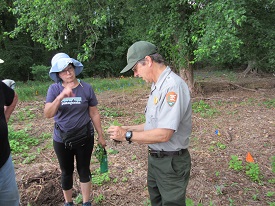 Nancy Herrman learns about invasives. Colored flags designate native plants that volunteers have put in. Nancy Herrman learns about invasives. Colored flags designate native plants that volunteers have put in. |
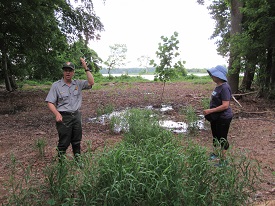 Brent Steury explains that the grasses are native and should not be removed, as Nancy Herrman listens. Brent Steury explains that the grasses are native and should not be removed, as Nancy Herrman listens. |
